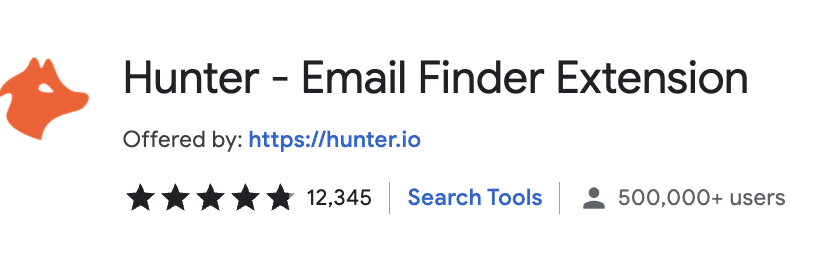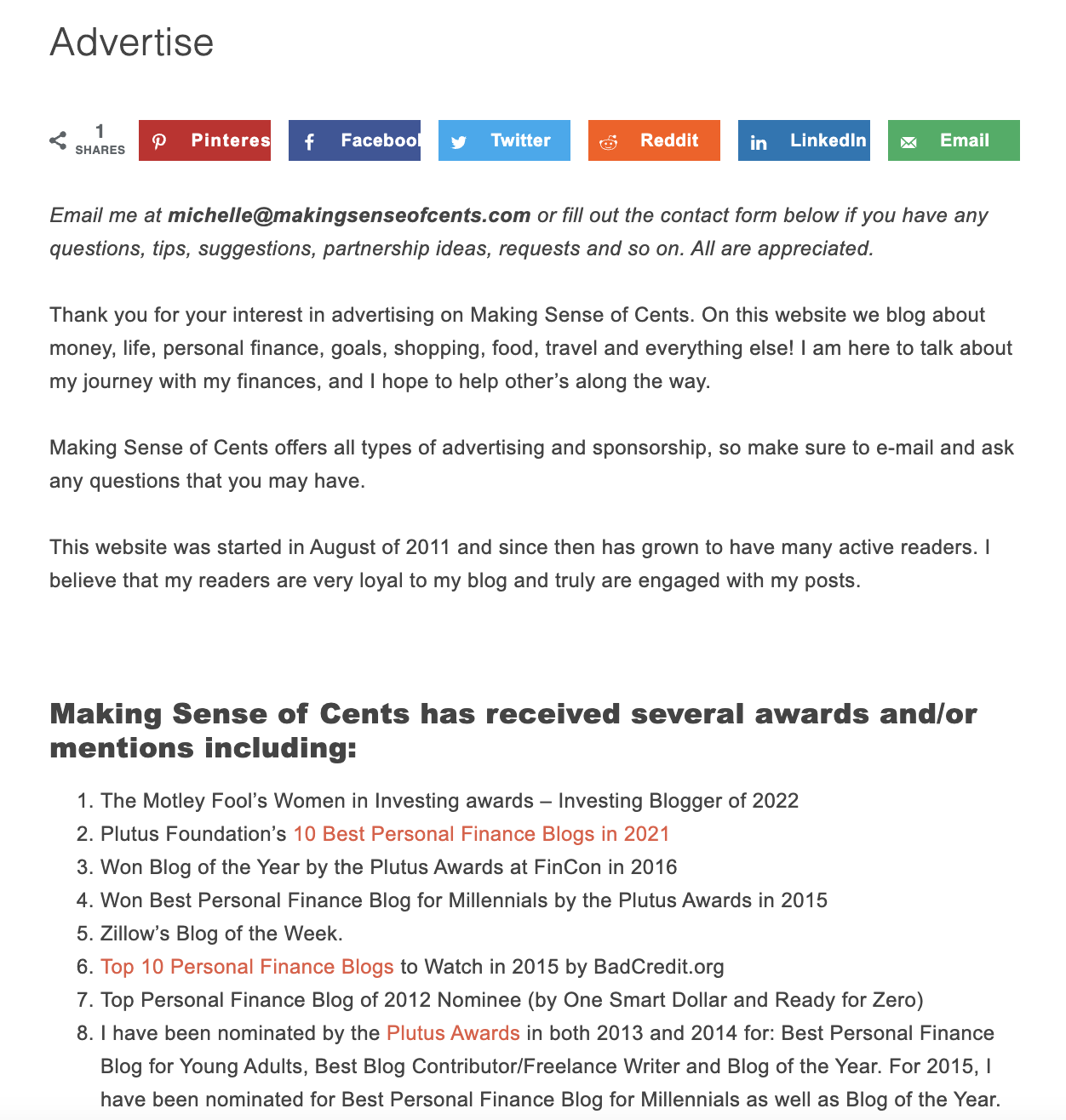How to Get Sponsors for Your Blog: 3 Proven Ways to Attract Real Money

When you buy something through one of the links on our site, we may earn an affiliate commission.
We're going to show you how to get sponsors for your blog.
If you're a blogger trying to figure out how to monetize your blog, sponsorships can be a lucrative way to make money.
Sponsorships work well for blogs of all sizes in virtually every niche.
It can sometimes be hard to know where to start and what process to follow to book sponsorships though.
In this guide, you'll learn how to get sponsors for your blog with 3 proven methods. You'll read about helpful information like:
- How sponsored posts work
- How to book sponsorships for your blog
- 3 proven ways to get sponsors for your blog
- How much sponsorships pay
Let's go!
Contents
How do sponsored posts work?
A sponsored blog post is when a company pays you to talk about them on your blog. This can be a sponsored blog post, social media post, email newsletter, etc.
The purpose of a sponsored post is to share a company with your audience so they can reach their goals:
- Creating brand awareness
- Helping them get customers
- Helping them make sales
Sponsorships are an effective form of marketing. They are mutually beneficial for influencers and companies. If you've looked at the types of blogs that make money, this is a key monetization method.
Influencer marketing is a multi-billion dollar industry. It's set to grow by more than 4x by 2025, to $24 billion+.
Types of sponsorships
Examples of sponsored posts can be:
- A sponsored review: A product review where you share your opinion about a company's product or service. This is a detailed blog post that may include pricing, features, and your overall opinion.
- Dedicated landing page: Creating a landing page for the sponsored product that will be published and visible online. For example, you could write a sponsored post including links for your blog.
- Email newsletter inclusion: A brand mentioned in an email newsletter to your audience.
- Dedicated email: An entire email dedicated to educating your audience about the sponsor.
- Social media post: One or more social posts to your audience on social media. For example, you could book a sponsored post campaign of 3 Instagram posts.
Requirements to book sponsored posts
To book sponsored posts, you'll need:
- An audience online
- A place where you interact with your audience
- Media kit (optional)
The first ingredient is having an audience online. This can be a small audience or a very niche audience, but you should have an audience.
Next, you should have a place where you interact with your audience online like a blog or social network such as Instagram.
Here are some examples of places where you interact with your audience:
- Personal blog
- Social networks like Instagram, TikTok, or YouTube
- Emails like your blog email list or Substack
- Donation platforms like Patreon or Ko-fi (you won't want to miss our Ko-fi review)
- An online community like Facebook Groups
What is a media kit?
A media kit is like an influencer's resume. It has some quick points about your personal brand that potential sponsors will want to know, like:
- A short bio about your personal brand, what you do, and who your audience is
- Number of people in your audience
- Audience demographics
- Sponsored post packages available
- Rates (optional)
A media kit is optional but I would recommend you create one, just in case you ever need one.
Creating a media kit is easier than you might think. You can start with a free media kit template. Then, change out the default content for your own.
Use a graphic design tool like Canva, which gives you access to tons of templates like media kits that you can customize based on your personal brand.
How to Get Sponsors for your Blog: 3 Proven Ways
Now you're sold!
You have an audience online and a platform where you connect with them. You're ready to monetize your personal brand with sponsorships.
Here are 3 proven ways you can do that.
1. Cold outreach vs. warm outreach
First, outreach.
Outreach is when you contact a company you want to work with. You'll research to find companies that align with your personal brand and then contact them to work together.
You have to take care in choosing the right companies that offer products and services that would actually benefit your audience.
Then, you need to make sure you contact the right person at that company.
This is usually the marketing or PR department. Sometimes, there's even a partnerships or sponsorships department you can email.
Find the right person to email using a tool like the Hunter Chrome extension.

Once installed, it searches all the email addresses on a website, just like this…

After activating the extension, it will pull the email addresses from the website. Find the email for the marketing or PR department so you can contact them for a sponsored post.
What is cold outreach?
Cold outreach is about contacting companies you've never worked with before. You have no prior relationship or history with them. You're reaching out because you think they would be a great fit with your personal brand and resonate with your audience.
Cold outreach has one of the lowest conversion rates, with an average of 1% to 5%.
If you think about it, it's like a stranger contacting you for business. How many business advertisements have you gotten in your inbox that you responded to?
First, it's hard enough to have your email land in their correct inbox. You don't want your message landing in their Spam folder, Promotions, or another folder where they might not see your email.
Then, if you happen to land in the right inbox of the person who makes marketing decisions, you have to be skilled enough at selling to convince them to work with you.
That's a difficult task, which is why cold outreach is a low conversion activity.
Still, though, it is a way you can get sponsored posts.
If you land a 2% conversion rate and you cold email 100 companies in a month, that means 2 people agreed to work with you. It's a tiny percentage compared to your outreach number but if each sponsored post you book is worth $2,500, you just made $5,000!
This is just an example.
What is warm outreach?
Warm outreach is when you contact a company you have a relationship with or a past connection with. You might have networked with them online before, done a special event together in the past, or met with them at a business conference, for example.
You'll follow the same process as with cold outreach but your chances of booking a sponsored post campaign may be higher since you have a history and the company knows you.
What to say in your email pitch
Your email pitch should be short and punchy. You want to capture the advertiser's attention right away and immediately state your intention.
- Use their name in the introduction, if known
- Briefly talk about who you are and why you think a partnership would be beneficial for them
- Show off a bit
When crafting your pitch email, using their name in your opening line is always an attention-grabber. It shows that you did your research and you know who you're talking to.
Now, the body of the email should cover:
- Who you are
- Why you're contacting the brand
- What you want
Make your email script sound personal and not like a canned email.
Think about your elevator pitch here, but the condensed form. Give them a compliment, talk about why you like them, and share a personal experience, if you have one. Make your email personal, not canned.
Next, clearly state what you're looking for. You can use words like “partnership,” “brand deal,” or “sponsorship.” Don't be afraid to show off a little bit:
- Share some quick stats of your conversion rates with past campaigns
- Talk about revenue numbers you drove to past sponsors
- Brag about your email open rates and engagement rate from your audience
Offer to send a media kit in the next email, if they'd like to review it, and then hit Send.
Then, the process does not stop here.
It's time for follow up.
If you haven't heard back from your initial email within a few days, it's time to follow up. Send a reminder email at least once or twice after your first email.
Sometimes all it takes is a reminder email to push your email back to the top of their inbox so they can see your message.
That's all there is to it for creating your email script for pitching.
Tips to find sponsors to contact
Here are some tips to make it easier to find potential sponsors for your blog.
1. Look at the competition
Looking at the competition will give you insight into what brands are already blogger-friendly. These companies have worked with bloggers before for sponsored posts, know the process and how it works.
They are going to be great to pitch and probably easier to work with since they have a history of working with bloggers.
To find companies that are sponsoring the competition, look at competitor blogs and do a search for sponsors. Make a list of those companies and email them.
2. Contact brands that are spending on ads
The idea here is to contact brands that you know are already spending money on marketing. If they're spending money on ads, then they may have a budget for influencer marketing, as well.
Do a Google search in your niche and pay attention to the companies that appear in the ad slots.

You can see in this Google search of “vegan food,” the last search result is an ad slot from Purple Carrot. This advertiser is paying for Google ads. They would be perfect to pitch for a vegan food blogger (you may want to check out vegan affiliate programs).
Do this with your niche, make a list of the companies that are running ads, and email them your pitch!
3. Keep in contact with brands you've worked with
Another great tip is to keep a good relationship with companies you've partnered with in the past.
This keeps the door open for future opportunities. You never know when an opportunity might arise to work with them again and this strategy improves the chances of booking a long-term partnership.
2. Get contacted by sponsors
Getting contacted by sponsors is one of the best ways to book a sponsored post. These are companies that have researched your brand and decided they want to work together.
There's no selling the brand on partnering because they're coming to you.
From here, all you have to do is negotiate the terms of the sponsored post campaign, come to an agreement, and execute it.
To improve your chances of getting contacted by sponsors, make sure you have your contact information displayed where you hang out online:
- Personal website
- Forums or community sites
- Social media
3. Join sponsored networks
Sponsored networks are companies that connect influencers and companies to work together on a sponsored post campaign.
First, find a sponsored network to join. Register, complete your profile, and then apply to sponsored campaigns.
Some sponsored networks display all the sponsored campaigns on their site. You can view and apply to those of interest and wait to hear back if the company wants to work with you.
Other networks will collect your information and reach out in the future when a brand expresses interest in working with you.
Here are some examples of sponsored post networks:
- Izea
- Activate
- Social Fabric
- Tap Influence
For more, check out these 27 influencer networks to find paid opportunities.
How much do blog sponsors pay?
Blog sponsors can pay hundreds up to thousands of dollars per sponsored post. The amount you make for sponsored posts is going to vary based on:
- The size of your audience
- The amount of monthly traffic you receive
- Engagement rate
- How specialized your niche is
You as the influencer will set your sponsored post rate.
For help on how to set your rate, you can check out Social Bluebook. It helps you calculate your “influencer value” so you know what rate to charge companies for sponsored work.
Sponsored posts and brand deals can be one of the most lucrative ways to make money as an influencer. It's important to correctly set your rate and tools like Social Bluebook can help.
This influencer booked $700,000 worth of brand deals halfway through the year!
How do I get sponsors to pay me?
When it comes to knowing how to get sponsors for your blog, there are two ways sponsors can pay you.
Sponsored posts can pay you in product or provide compensation. Paying you in product could mean getting a 6-month subscription to the company's app or receiving the product they sell for free.
But, if you're not interested in gifted exchanges, you can get sponsors to pay you.
First, make sure you're speaking with the right person. This is usually someone from the company's marketing or PR department.
Sell yourself and make your sponsored blog post sound valuable.
Talk about your metrics, engagement rate, share stats from past campaigns you've run, etc.
Make sure you're reaching out to established companies. Startups or newer organizations might not have a budget for sponsorships.
To guard against a gifting offer, make sure to target seasoned companies or brands that have a history of working with influencers on paid brand deals. There are tools online you can use for free to spy on companies that have done paid brand deals.
Here are some examples:
- Clara
- Influent
Create an Advertise page
Also, for bloggers, it's helpful to have a dedicated page on your blog for advertisers. Here's an example to review, from the blog Making Sense of Cents:

She does a great job of giving advertisers what they're looking for. This page shares that the blog does support advertising.
The page also shares:
- What the blog is about
- Who the audience is
- How to contact the owner
- Examples of media/PR mentions
- Statistics about the blog/audience
Your Advertise page is also a great place to post your media kit, if you want to publish it publicly.
How do bloggers get brand deals?
You can get brand deals through outreach and getting contacted by brands. Outreach happens by cold pitching or warm pitching companies for sponsored posts. This also happens through applying for campaigns on sponsored networks.
Getting contacted by brands happens when a company reaches out to you. This can happen if you have your contact information clearly displayed on your channels – social media, blog or website, etc.
As a blogger, you will learn how to get sponsors for your blog through trial and error. Over time, you'll get better at knowing what works best for your blog and audience and it gets easier.
How do I get a sponsored post?
Ready to get a sponsored post?
These 3 ideas for how to get sponsors for your blog can help put you on the path to booking your first sponsored blog post!
Influencers are actively making money with brand deals. Check out some of these success stories:
- Foundr smashed their goal of $50K booked in 4 weeks (they actually made $70K in that time)
- Creators are making thousands per month from Instagram sponsored posts
- The Bettered Blondie made $2,000 this month from sponsors alone
Follow one or more of the ideas shared in this article to book sponsored posts for your personal brand.
And for more on becoming a successful influencer, check out our guide on how to become an influencer!
Want to learn step-by-step how I built my Niche Site Empire up to a full-time income?
Yes! I Love to Learn
Learn How I Built My Niche Site Empire to a Full-time Income
- How to Pick the Right Keywords at the START, and avoid the losers
- How to Scale and Outsource 90% of the Work, Allowing Your Empire to GROW Without You
- How to Build a Site That Gets REAL TRAFFIC FROM GOOGLE (every. single. day.)
- Subscribe to the Niche Pursuits Newsletter delivered with value 3X per week
My top recommendations
















